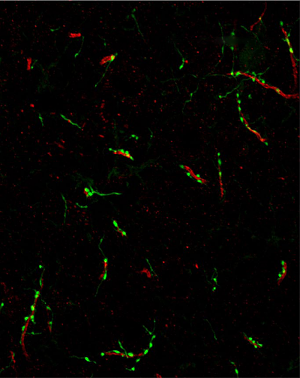Coordination of neuronal activity between two brain areas, the amygdala and the hippocampus, as well as precisely-timed integration of sensory inputs in the amygdala, are critical for emotional memories. Amygdala neurons that release the inhibitory neurotransmitter GABA (GABAergic cells) are expected to play key roles in these events, but their precise identity and function are not known.
New research by the Capogna and Magill groups in the Unit sheds new light on the functional roles of various GABAergic cell types of amygdala in orchestrating network oscillations and responses to intense sensory stimulation. Bienvenu et al. discovered that distinct types of GABAergic cell fulfil specialised and complementary roles in regulating network activities of amygdala. They identified and fully characterized for the first time the activity of four types of GABAergic cells in the rat amygdala: axo-axonic cells, parvalbumin-expressing basket cells, calbindin-expressing dendrite targeting cells, and “AStria (amygdala-striatum transitional area)-projecting” cells.
- First comprehensive definition of GABAergic cell types in the amygdala
- Identification of the neuronal connectivity of each cell type
- GABAergic cell-type-specific coding of hippocampal rhythmic activity and sensory stimuli
